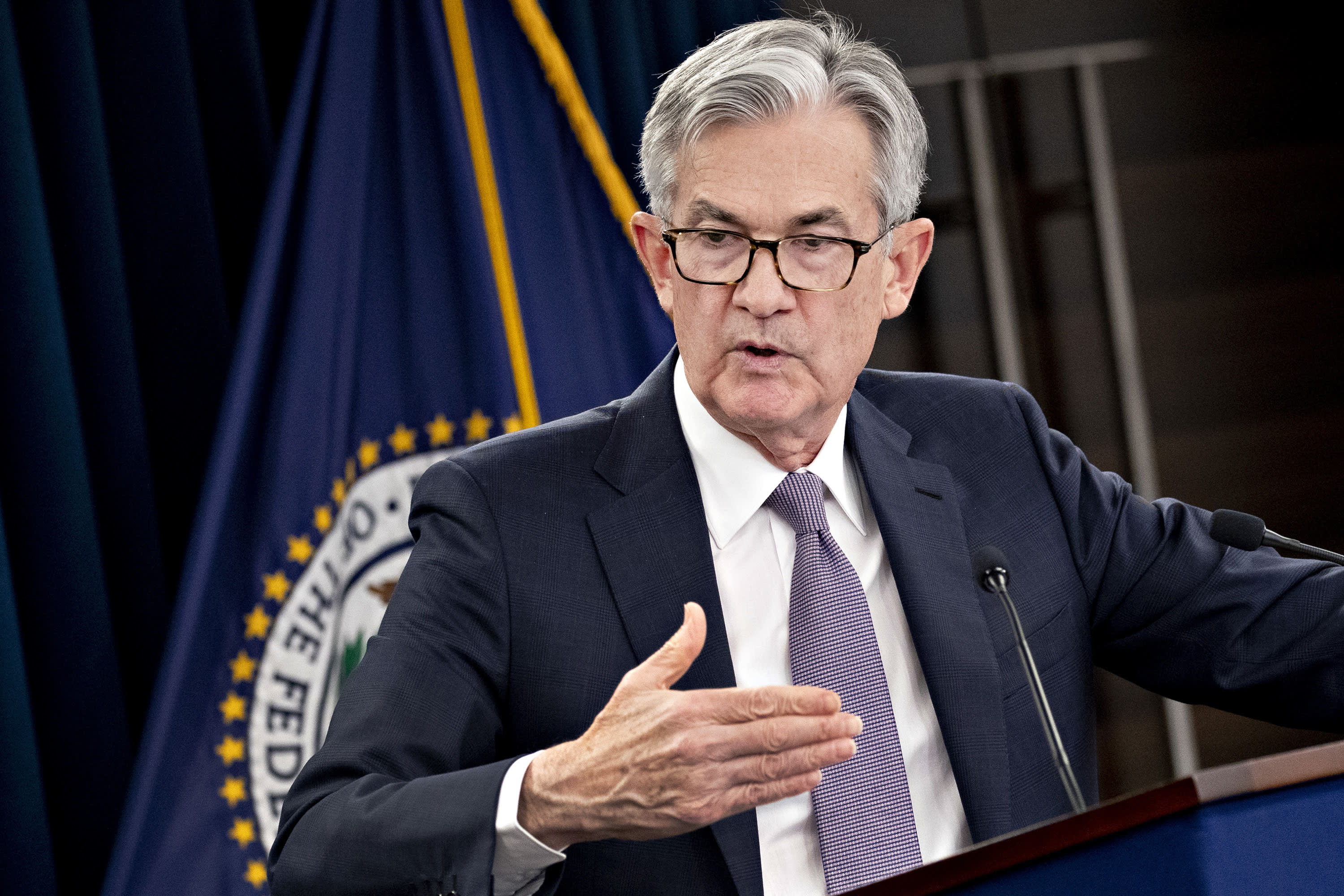Jerome Powell, chairman of the U.S. Federal Reserve, speaks during a news conference following a Federal Open Market Committee (FOMC) meeting in Washington, Jan. 29, 2020.
Andrew Harrer | Bloomberg | Getty Images
The Fed does not expect to see inflation pick up for years, and it is willing to keep rates at zero even after it does.
Stocks initially surged after the Fed released its post-meeting statement and its latest economic forecast, showing it will keep interest rates at zero at least through 2023, as expected. Stocks gave up their gains as Fed Chairman Jerome Powell briefed the media, and described the Fed’s guidance as strong and “powerful.”
“He’s the great and powerful Oz. Investors got duped. They thought enhanced forward guidance meant something, but when they peeked behind the curtain they realized the Fed didn’t do anything, and the market rolled over,” said Michael Arone, chief investment strategist at State Street Global Advisors.
Treasury yields moved slightly higher after Powell said the Fed plans to keep its asset purchases at current levels for now. Some bond market pros have been expecting the Fed to increase Treasury purchases, and Powell did not commit to that. The 10-year Treasury yield rose to 0.695%.
“We’re going to continue to monitor developments, and we’re prepared to adjust our plans as appropriate,” Powell said.
But it was the Fed’s guidance that markets found dovish. In the Fed’s latest projections, core inflation is expected to stay low and not reach the Fed’s 2% target until 2023. At the same time, the job market is expected to improve to the point where unemployment is at 4% in 2023, below the longer run rate of 4.1%.
“This is dovish – lower rates for longer, higher equities, weaker dollar,” said Jon Hill, senior fixed income strategist at BMO. “The Fed is saying we’re not hiking in 2023, maybe in 2024 … What they’re saying is these are our goals. We expect to have just barely met them and even then, they’re not raising rates.”
The Fed last month announced a change to its policy, where it will now let inflation run above its target for some time before it moves to raise rates. But in the central tendency of Fed forecasts, the Fed sees core inflation running below 2% through 2022. It expects core PCE inflation at 1.3% to 1.5% this year, and 1.6% to 1.8% next year. The pace reaches 1.9% to 2% by 2023.
But AB economist Eric Winograd said Powell may have undercut the dovish message he was sending.
“He noted that targeting an inflation overshoot for ‘some time’ as the statement says, means that they are not targeting a ‘sustained’ overshoot. So how long is ‘some time’ if it isn’t sustained?'” Winograd said. “That imprecision is a problem that the committee is going to have to solve to reap the full benefits of the framework shift. It’s not a coincidence that the stock market, which had been in positive territory, flipped negative after the chair’s comments.”
Powell said the Fed expects inflation to ultimately improve.
“That’s very strong forward guidance, and we think that will be durable guidance that will provide significant support for the economy,” he said.
While some Wall Street strategists and investors believe inflation could become a problem, the Fed has said it is more concerned about disinflation.
